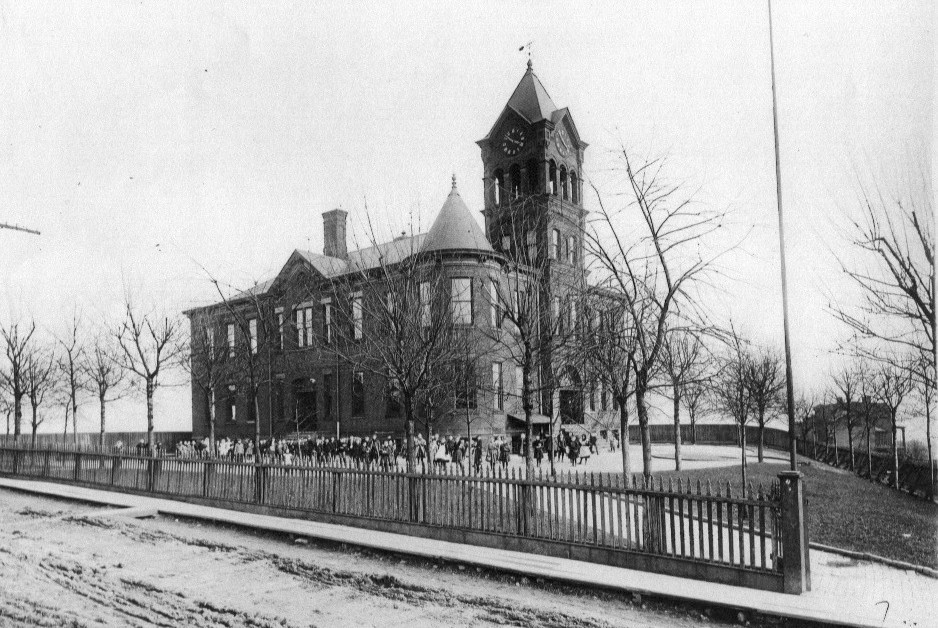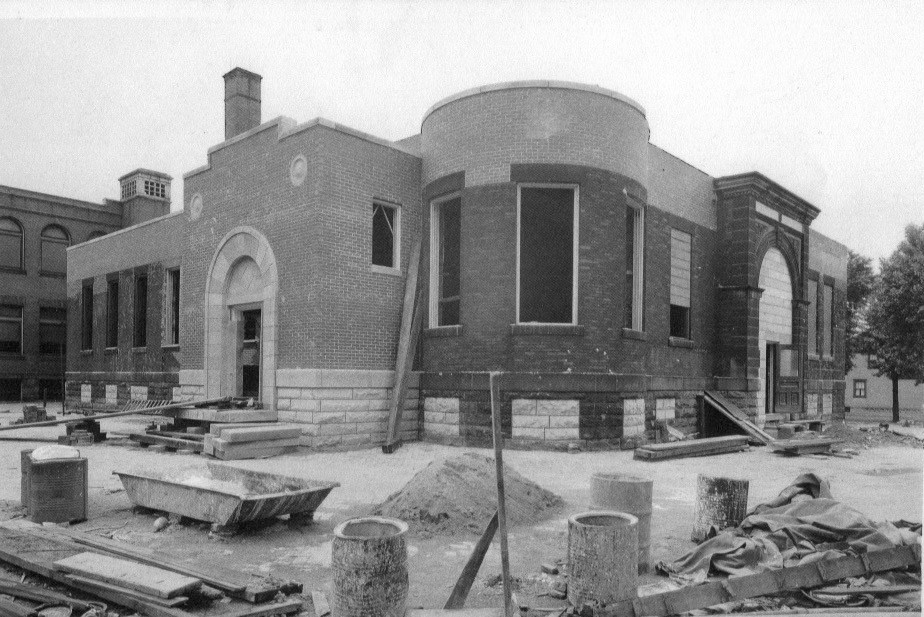Earlier this month, in collaboration with Pittsburgh Public Schools, we submitted a nomination for Spring Hill Elementary to be considered a City of Pittsburgh Historic Landmark. Located at the intersection of Damas St. & Noster St. in Pittsburgh's Spring Hill neighborhood, the building has served as a focal point for the community for more than a century.
The original school two-story, brick school was constructed as the Seventh Ward Public School in 1896 in then Allegheny City (annexed into Pittsburgh in 1907). With a four story belfry, turret, and prominent location the building served as a notable centerpiece of the neighborhood during a period of rapid population growth. So much so that an addition to the building was added along Noster Street just a few years later in 1908, nearly doubling the building's size and capacity.
In 1936 the school underwent another dramatic change with a dramatic renovation of the school's original building. In the grip of the Great Depression, Pittsburgh School Board's building staff and program were funded by the federal government and with that support initiated Federal Public Works Project Docket PA 1156. The project involved removing the entire second story and bell tower of the school's original wing, blocking in the former west-facing main entrance, and constructing a new auditorium entrance on the north facade. The stone relief lettings above the original main entrance, which read "Seventh Ward Public School" was effaced as well. The entire project was overseen by the Pittsburgh School Board's staff architect and Assistant Superintendent, Marion Steen.
While the architecture of the school is particularly notable, the building should be considered a historic landmark for its prominent place in the neighborhood, its association with Marion Steen, and, perhaps most notably, how it reflects the evolution of public school design within the city of Pittsburgh.
To learn more about the history of Spring Hill Elementary, you can access our nomination here.
If you would like to lend your support for the designation, please email the City's Historic Preservation Planner, Sarah Quinn at sarah.quinn@pittsburghpa.gov or come to the Historic Review Commission's public hearing on Wednesday, July 11th at 1pm, 200 Ross Street.
We would like to thank Pittsburgh Public Schools for their partnership and collaboration to preserve this exceptional piece of Pittsburgh and Angelique Bamberg of Clio Consulting for her work on this nomination. If you'd like to help our landmarking efforts, please consider donating to our Landmarking Fund.





